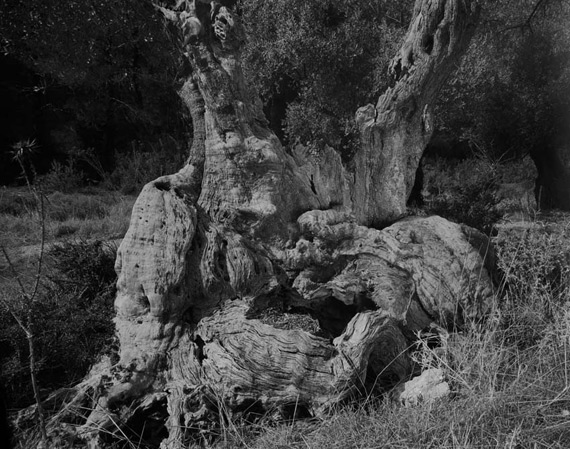
Christian von Alvensleben
Kunsthalle St. Annen Museen für Kunst und Kulturgeschichte der Hansestadt Lübeck St. Annen-Str. 23552 Lübeck Allemagne
From 2003 to 2006 Christian von Alvensleben took photographs of olive trees in Greece. These witnesses of an ancient European culture and provider of numerous essential goods are God trees.
At the same time Christian von Alvensleben started to collect and photograph 'attractive' rubbish, the leftovers of today's consumer goods, the sea fruit washed up onto beaches by the sea.
'GodTrees' and 'SeaFruit' characterise yesterday and today.
'The attractions of proximity or alienation of the unusual, of the new, put a connoisseur and expert such as Christian von Alvensleben in a state of readiness to mediate the presentation of an image. He takes us across country and overseas and has his silent images und select objects relate something to us. He has us watch, realise, see behind, see differently. Fantasy becomes animated and we start to think.
In its immeasurable patience, nature can nourish a tree every day, year in, year out, bestow the sun's rays and wind, heat and cold on it. And determine its age.
The elements and their tides can change, destroy and re-model what has been made by humans and leave it behind for man, re-moulded as sculptures.
(Wind and weather, water and waves have given the flotsam and jetsam of civilisation a maltreated appearance. And changed it into a new beauty.)
These images have a reference character which will not elude us. A trained observer and visual artist conveys to us appearances of the tenacity and power of survival of the transitory. And of the debris of the high-speed age.
The contrast between amaranthine nature and the rubbish of a society of abundance is held together by the quality of the presentation. A community of the intellect is created through visuality and art.
In the execution of the undiscovered and unexpected, Christian von Alvensleben is a patient hunter, fanatically industrious, an enticer and conveyor of his visual faculty. He guides our thoughts through images: How to withstand the centuries and intensely experience a better understanding of the beauty of fragility.'
Prof. Kurt Weidemann

